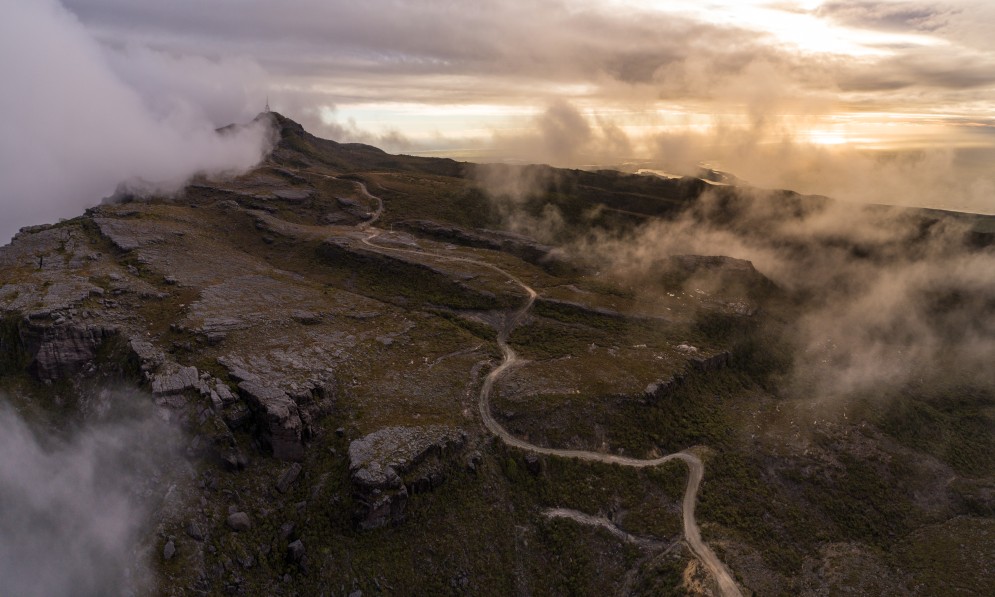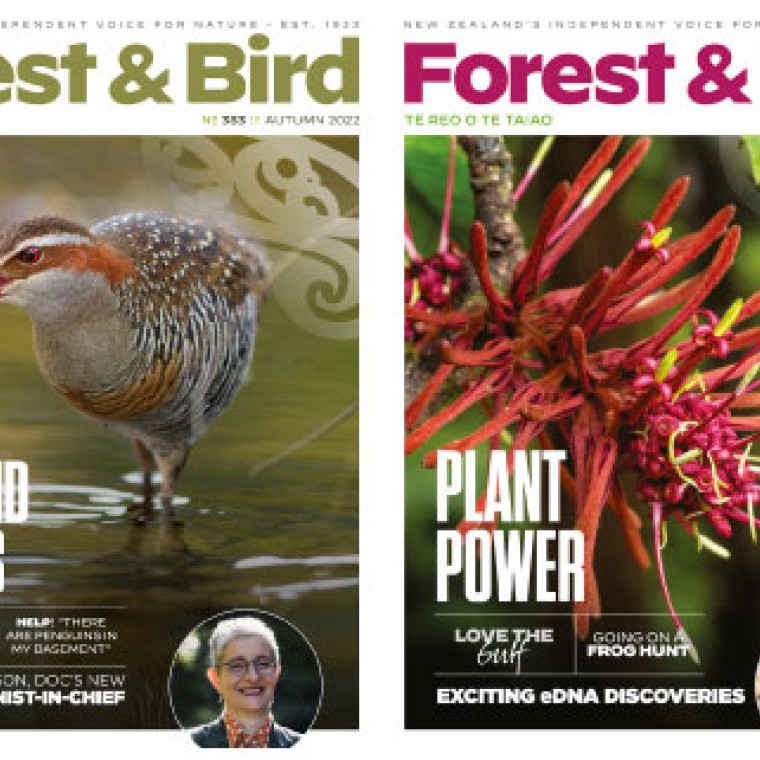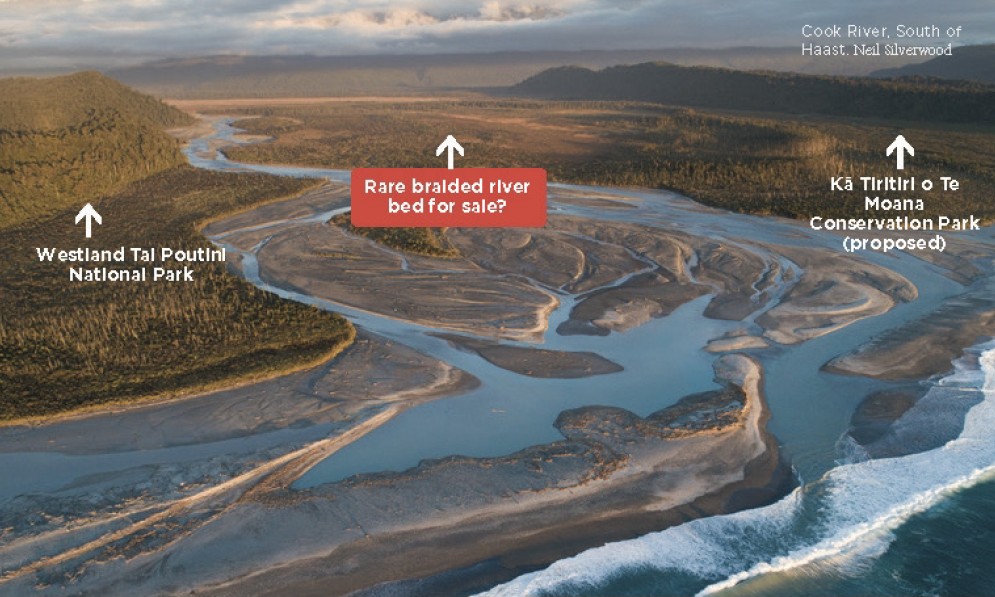A lowland braided river terrace on the Cook River near Fox Glacier may be sold off instead of being added to its neighbouring national park. By Lynley Hargreaves
Forest & Bird magazine
A version of this story was first published in the Winter 2025 issue of Forest & Bird magazine.
New Zealanders love getting out onto public conservation land, whether they are trampers, birdwatchers, cyclists, boaties, hunters, or wild swimmers. But some of your favourite places on the West Coast could soon be sold off to private interests or mined for coal and gold.
The long-running (four-year) review of public conservation land on Te Tai Poutini the West Coast is set to conclude soon, with Minister for Conservation Tama Potaka poised to take final decisions on the future of huge tracts of wild rivers, native forests, wetlands, and mountains.
A national panel was convened to consider 644,000ha across 504 West Coast land parcels in the stewardship category, a statutory “holding pen” for land that hasn’t had its ecological and other natural values assessed. The panel made a series of recommendations on which category of public conservation land each parcel should be permanently assigned to.
It recommended that only 12% be added to the existing national parks, one of the highest categories of environmental protection (see box right). It didn’t recommend any scientific reserves be gazetted, even on the Denniston Plateau, home to many ecological rarities only known in this location.
Instead, the panel said 54% of the West Coast’s stewardship land should become conservation park, a category that barely offers better protection than stewardship land. While both are still types of public conservation land, and their natural and historic resources must be protected first, conservation parks and stewardship land can still be exploited for development.
To make matters worse, current rules say conservation parks cannot be disposed of – sold off – but under the government’s Modernising conservation land management proposals, such protection could be removed.
Forest & Bird is particularly concerned about the future of the Denniston Plateau, the Waitaha River catchment, and large areas of mature native forest in South Westland.
“Despite their ecological significance, these land parcels were recommended as only conservation park,” says Nicky Snoyink, Forest & Bird’s regional conservation manager for the West Coast.
“We’re concerned that some areas are at further risk of fragmentation, as there are parts of significant land parcels recommended for disposal or left out of the process altogether.”
In our submission, Forest & Bird sought stronger protection for all of these areas, saying Denniston should become a scientific reserve and the magnificent rimu and kahikatea forests of South Westland should receive higher protection.
We also recommended the Waitaha become part of neighbouring Westland Tai Poutini National Park, along with the Waitangi Conservation Area to the south, or that it be managed as a stand-alone national park.
Elsewhere, a number of larger parcels, particularly those adjoining riverbeds, were put down for “part disposal”, where the section of the conservation area over which a grazing licence is held would be sold off.
This includes the Cook River Weheka Flat conservation area, comprising 1600ha of West Coast braided riverbed. It is flanked on both sides by globally significant native forests and part of Te Wāhipounamu South West New Zealand World Heritage Area.
To the north, it is bordered by Westland Tai Poutini National Park, and to the south is an area recommended to become part of Kā Tiritiri o Te Moana Conservation Park, a lower level of protection.
In between is a large, braided riverbed home to a wide diversity of birdlife, such as tūturiwhatu banded dotterels, matuku-hūrepo Australasian bitterns, and kotoreke marsh crakes.
This grazed area of riverbed could be sold off for farming and developed, fragmenting the birds’ habitat, if the Minister agrees with the national panel’s recommendations.
“Forest & Bird’s submission argued that it is wrong to dispose of these lowland river terraces,” says Nicky. “Retaining them as public conservation land presents an opportunity for ecosystem restoration and regeneration, and for climate mitigation.”
“To avoid the fragmentation of these important ecosystems and to retain the natural character of these wild West Coast rivers, the Minister must reject the disposal of any river flood plains and maintain them as public conservation land.”

Mt Rochfort on Denniston Plateau - foreground and right is Whareatea West. Image: Neil Silverwood
Making Denniston a reserve
The West Coast stewardship land review offers a once-in-a-lifetime opportunity to permanently protect the Denniston Plateau – with its treasure trove of ecological curiosities – as a scientific reserve.
Forest & Bird has long believed the 7539ha Mount Rochfort Conservation Area should be gazetted as a scientific reserve. It includes most of the Denniston Plateau, with its complex mosaic of interrelated habitats, high degree of continuity and integrity, and lack of exotic flora and fauna.
But the national panel recommended giving the area conservation park status despite Denniston being home to native ecosystems that aren’t known anywhere else in New Zealand.
This recategorisation will put it at risk of unfettered large-scale coal mining, which can now be approved, with little environmental oversight, under the government’s Fast-track Approvals Act.
When the nearby now-mothballed Escarpment Mine had its consents granted in 2012, the hearing panel said, “From the evidence presented to us, it is abundantly clear that large scale mining is poised to invade the entire Denniston Plateau coal reserves which if unchecked, will totally destroy the ecosystems which are present.”
“The Mount Rochfort Conservation Area should be reclassified into a scientific reserve because it contains rare and important ecosystems which are found nowhere else in New Zealand,” says Nicky Snoyink.
“Its regionally important geological features are integral to the function of the natural landscape and ecosystems, and significant ecological values on the Denniston Plateau.”
The conservation area supports strong populations of numerous bird species, such as rorora great-spotted kiwi and mātātā South Island fernbird, and is a national stronghold for lizards.
It’s the only home of the threatened Denniston land snail subspecies of Powelliphanta patrickensis, which saw its threat ranking increased to nationally critical last year because of the threat of large-scale coal mining under Fast-track Approvals Act.
PROTECTING NATURE
A national park, scientific reserve, or wilderness area has the highest form of protection and generally cannot be destroyed by the government’s new fast-track legislation. This land must be managed by the Department of Conservation for its intrinsic values with its native species protected.
Other categories of public conservation land, such as conservation parks, scenic reserves, and ecological areas, have lesser protections and can exploited for development. For example, under fast-track, companies can be given approval to mine or develop without the public having its say.

